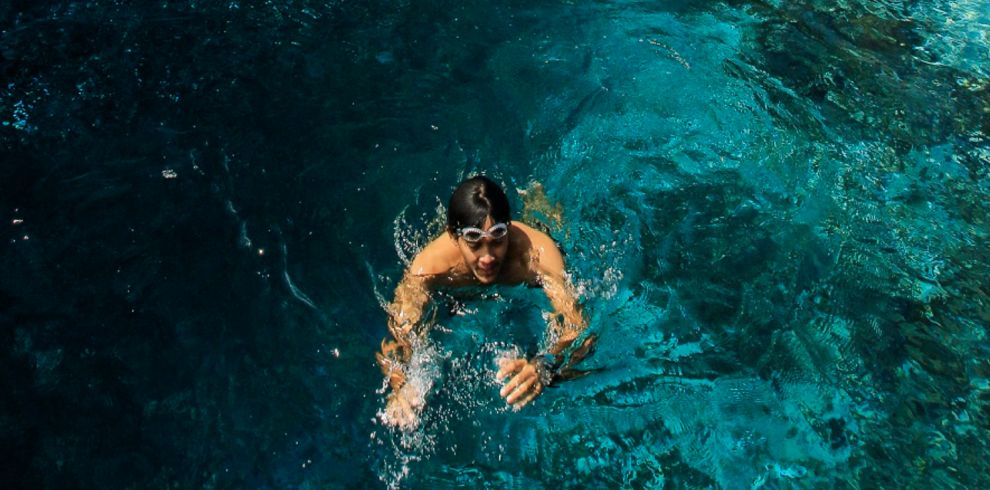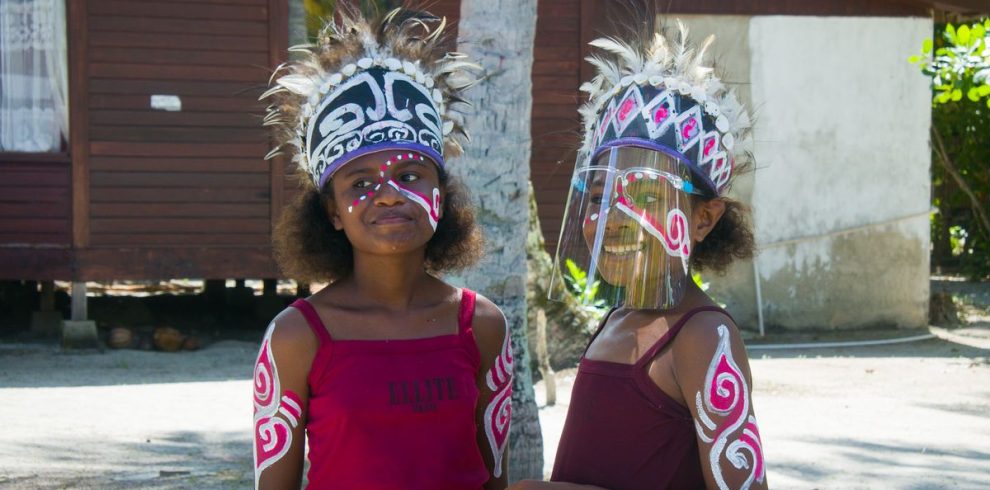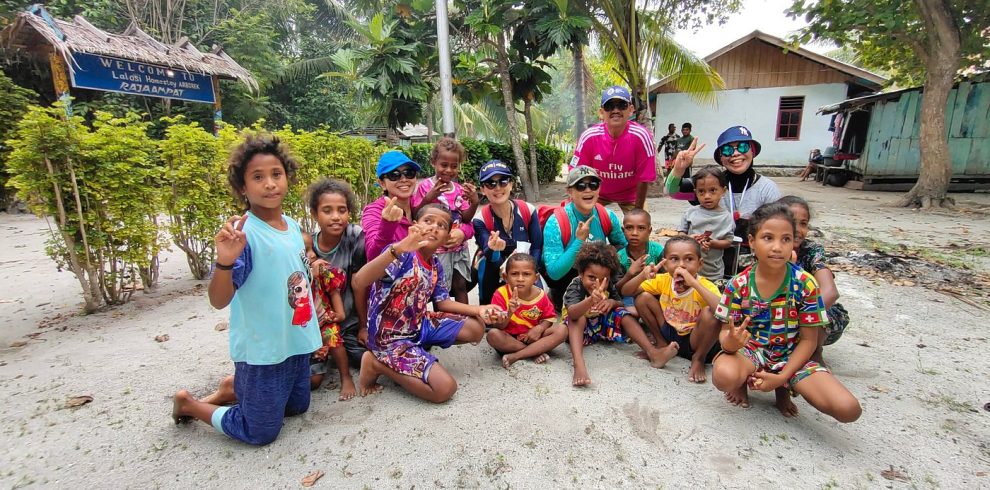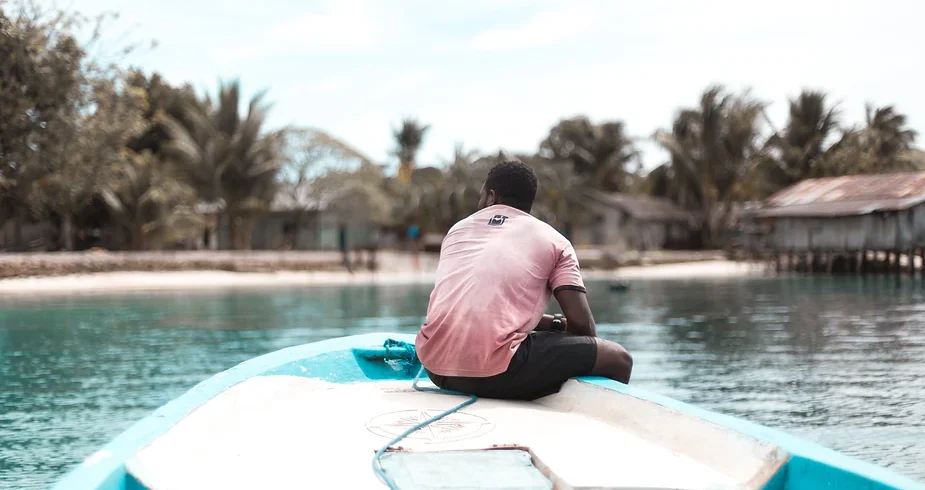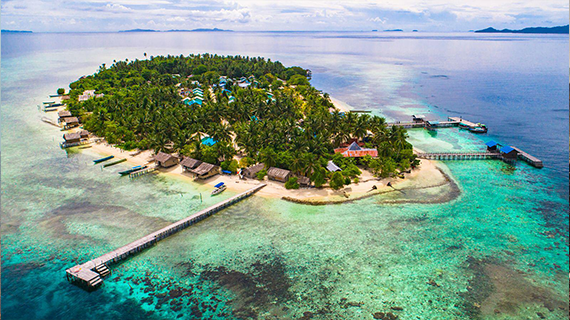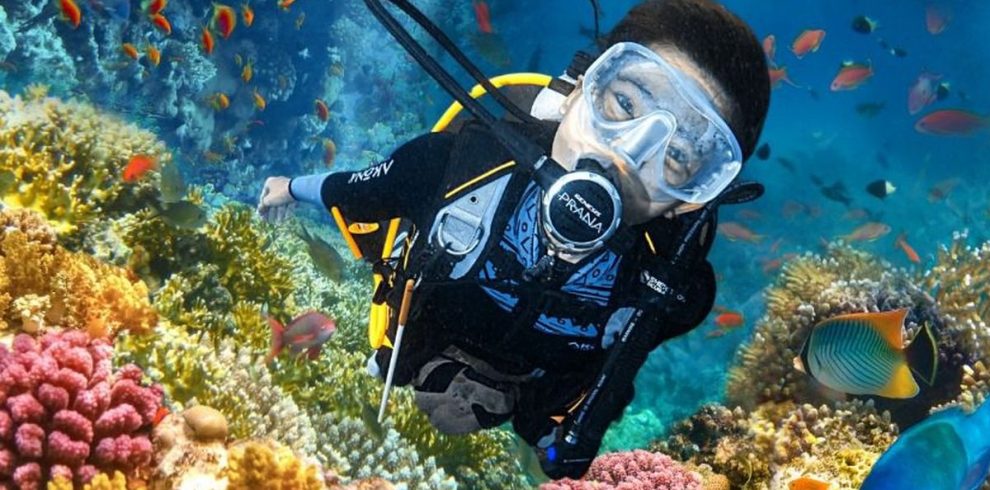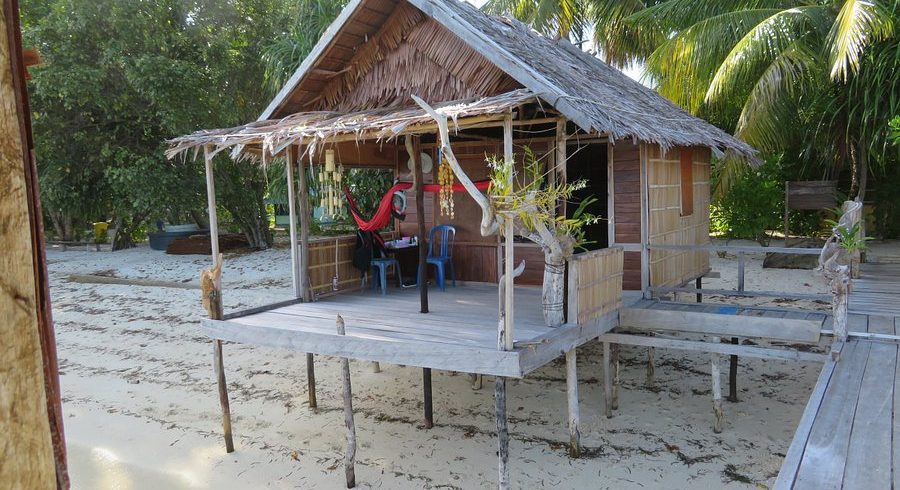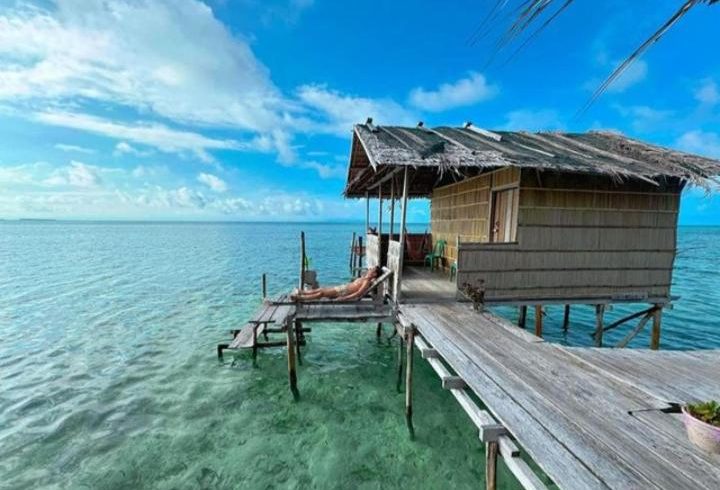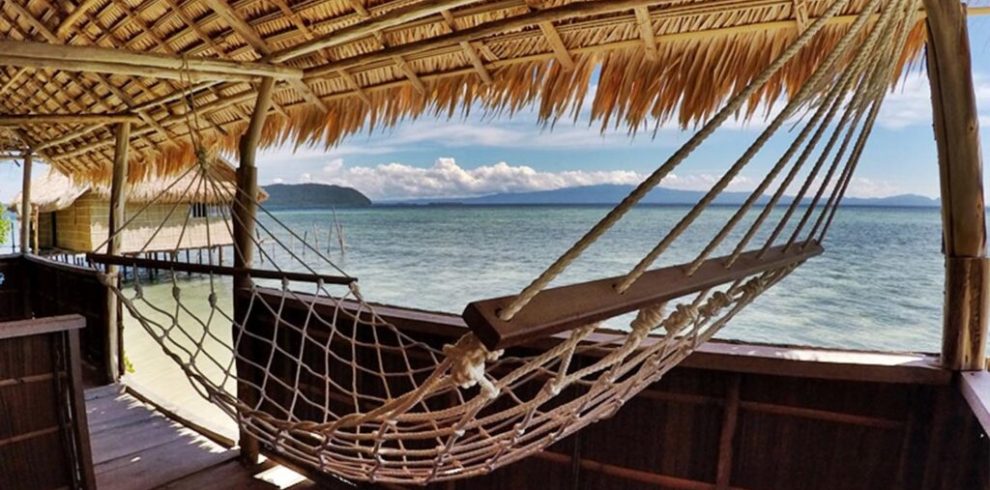Raja Empat
Kepulauan Raja Ampat adalah salah satu destinasi wisata bahari paling menakjubkan di dunia, terletak di ujung barat Papua Barat Daya, Indonesia. Terdiri dari lebih dari 1.500 pulau besar dan kecil, Raja Ampat secara harfiah berarti “Empat Raja” yang merujuk pada empat pulau utama: Waigeo, Misool, Salawati, dan Batanta. Keempat pulau besar ini mengelilingi ratusan pulau karang kecil yang menciptakan lanskap laut spektakuler dengan air sebening kristal dan warna biru kehijauan yang menenangkan mata.
Raja Ampat dikenal sebagai surga bawah laut dunia karena keanekaragaman hayatinya yang luar biasa. Menurut penelitian Conservation International, kawasan ini memiliki lebih dari 75% spesies karang dunia, lebih dari 1.500 spesies ikan, dan berbagai biota laut langka seperti ikan pari manta, hiu karpet (wobbegong), penyu hijau, dan kuda laut mini. Ini menjadikan Raja Ampat sebagai salah satu lokasi menyelam dan snorkeling terbaik di planet ini, yang tak hanya dikunjungi wisatawan lokal tetapi juga para penyelam dari berbagai penjuru dunia.
Namun, pesona Raja Ampat tak hanya berada di bawah laut. Budaya lokal yang kuat, keramahan masyarakat Papua, dan kehidupan kampung yang masih alami membuat pengunjung merasa seperti kembali ke alam dan akar manusia. Kampung-kampung seperti Arborek, Sawinggrai, Friwen, dan Yenbuba menjadi pintu masuk pengalaman wisata budaya, homestay, dan ekowisata. Dengan pilihan aktivitas seperti island hopping, menyaksikan burung Cendrawasih, trekking ke bukit Piaynemo yang ikonik, hingga mencicipi makanan laut segar, Raja Ampat menawarkan pengalaman yang tak terlupakan — menyentuh jiwa, memperkaya hati.
Gastronomi
Kayaking is the use of a kayak for moving across water. It is distinguished from canoeing by the sitting position of the paddler and the number of blades on the paddle. A kayak is a low-to-the-water, canoe-like boat in which the paddler sits facing forward, legs in front, using a double-bladed paddle to pull front-to-back on one side and then the other in rotation. Most kayaks have closed decks, although sit-on-top and inflatable kayaks are growing in popularity as well.
Kayaks were created thousands of years ago by the Inuit, formerly known as Eskimos, of the northern Arctic regions. They used driftwood and sometimes the skeleton of whale, to construct the frame of the kayak, and animal skin, particularly seal skin was used to create the body. The main purpose for creating the kayak, which literally translates to “hunter’s boat” was for hunting and fishing. The kayak’s stealth capabilities, allowed for the hunter to sneak up behind animals on the shoreline, and successfully catch their prey. By the mid-1800s the kayak became increasingly popular and the Europeans became interested. German and French men began kayaking for sport. In 1931, a man named Adolf Anderle became the first person to kayak down the Salzachofen Gorge, this is where the birthplace of modern-day white-water kayaking is believed to have begun. Kayak races were introduced in the Berlin Olympic Games in 1936.
In the 1950s fiberglass kayaks were developed and commonly used, until 1980s when polyethylene plastic kayaks came about. Kayaking progressed as a fringe sport in the U.S. until the 1970s, when it became a mainstream popular sport. Now, more than 10 white water kayaking events are featured in the Olympics.While kayaking represents a key international watersport, few academic studies have been conducted on the role kayaking plays in the lives and activities of the public .
Menikmati Senja
A is an overland journey, usually a trip by tourists to Africa. In the past, the trip was often a big-game hunt, but today, safari often refers to trips to observe and photograph wildlife—or hiking and sightseeing, as well.
The Swahili word safari means journey, originally from the Arabic meaning a journey; the verb for “to travel” in Swahili is kusafiri. These words are used for any type of journey, e.g. by bus from Nairobi to Mombasa or by ferry from Dar es Salaam to Unguja. Safari entered the English language at the end of the 1850s thanks to Richard Francis Burton, the famous explorer.
The Regimental March of the King’s African Rifles was ‘Funga Safari’, literally ‘tie up the March’, or, in other words, pack up equipment ready to march.
In 1836 William Cornwallis Harris led an expedition purely to observe and record wildlife and landscapes by the expedition’s members. Harris established the safari style of journey, starting with a not too strenuous rising at first light, an energetic day walking, an afternoon rest then concluding with a formal dinner and telling stories in the evening over drinks and tobacco.
Sejarah & Budaya
Road cycling is the most widespread form of cycling. It includes recreational, racing, and utility cycling. Road cyclists are generally expected to obey the same rules and laws as other vehicle drivers or riders and may also be vehicular cyclists.
Dedicated road bicycles have drop handlebars and multiple gears, although there are single and fixed gear varieties. Road bikes also use narrow, high-pressure tires to decrease rolling resistance, and tend to be somewhat lighter than other types of bicycle. The drop handlebars are often positioned lower than the saddle in order to put the rider in a more aerodynamic position. In an effort to become more aerodynamic, some riders have begun using aerobars. Who and when aerobars where invented is unclear but they seem to date back to the early 1980s. The light weight and aerodynamics of a road bike allows this type of bicycle to be the second most efficient self-powered means of transportation, behind only recumbent bicycles due to the latter’s higher aerodynamic efficiency.
Snorkling
Tourism is travel for pleasure or business; also the theory and practice of touring, the business of attracting, accommodating, and entertaining tourists, and the business of operating tours. Tourism may be international, or within the traveller’s country. The World Tourism Organization defines tourism more generally, in terms which go “beyond the common perception of tourism as being limited to holiday activity only”, as people “traveling to and staying in places outside their usual environment for not more than one consecutive year for leisure, business and other purposes”.
Tourism can be domestic or international, and international tourism has both incoming and outgoing implications on a country’s balance of payments. Today, tourism is a major source of income for many countries, and affects the economy of both the source and host countries, in some cases being of vital importance.
Other Trips
These are other trips.

